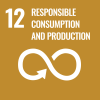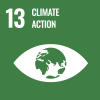Latex gloves are personal protective equipment (PPE) commonly used when working in the laboratory. However, since the Covid-19 pandemic, latex gloves are not only used by people who work in laboratories but also by medical personnel and the general public. The use of latex gloves aims to protect the hands from the contamination of this dangerous virus. However, without us realizing it, latex glove waste has had a huge impact on all aspects of life during the pandemic, one of which is the environmental aspect. Even though latex gloves are needed during the pandemic, it has become a new problem for the environment.
As part of the Student Creativity Program-Exact Research (PKM-RE) UGM FMIPA, Mandrea Nora (2019), Aditya Yuan Pramudyansyah (2018), Rangga Indra Riwansyah (2019), and Nanda Tasqia Amaranti (2019) managed to process latex gloves waste into diesel fuel under the supervision of a Chemistry Lecturer at the UGM Faculty of Mathematics and Natural Sciences Mokhammad Fajar Pradipta .
According to Mandrea Nora, this innovation began when several members of the team discussed medical waste problems due to the Covid-19 pandemic. After discussion and reading some literature, they finally submitted the idea as a PKM RE proposal. “We found that latex gloves have the main chemical composition Polyisoprene polymer. When pyrolyzed, it will produce a hydrocarbon compound in Limonene form. Limonene is a hydrocarbon compound with a C10 fraction that has a high potential to be used as diesel fuel,” he explained in a release sent Monday (23/8).
The process of processing latex gloves waste into fuel uses the pyrolysis method. Pyrolysis of latex gloves was carried out at a temperature of 350 degrees Celsius for 3 hours to obtain the pyrolysis oil. “Furthermore, the pyrolysis oil is purified through the Hydrocracking process to obtain the diesel fuel,” he said.
To determine whether the fuel produced belongs to the diesel fuel fraction, they identified compounds using the Gas Chromatography – Gas Spectroscopy method and did physicochemical tests on the fuel. “The test results were then compared with those on diesel fuel on the market,” he explained.



